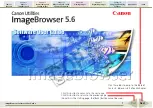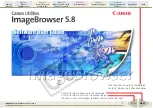
example, if you set sync to 1/1, use a tempo of 120 bpm and play a whole
note (4 beats), the duration of one cycle of the regular waveforms (Sine,
Triangle, Ramp, Square) will be 2 seconds. However, the Sample and Hold
and Noise waveforms will change their state within 1/8 of 2 seconds or 0.25
seconds.
The "Freq" (Frequency) parameter determines the LFO's frequency (in Hz).
This parameter has no function if Sync is used (see below).
The "Symmetry" parameter can be used to distort the waveform's shape,
stretching it or compressing it as required.
The "Phase" parameter sets the point in the waveform cycle at which
modulation begins.
You can also apply an envelope to the LFO using the Delay, Attack and
Decay dials.
Hint: The Phase, Delay, Attack and Decay parameters do not function if the
LFO is set to Mono mode (this is because it’s permanently running).
The "Delay" parameter sets the amount of time (in seconds) before the LFO
begins modulating the signal. A Delay setting of 0 means that the LFO
begins operating immediately.
The Attack dial setting determines the length of time (in seconds) it takes
for the LFO to reach the full modulation depth. This can be used to slowly
increase the amount of modulation applied to the signal. A setting of 0
means that modulation commences immediately.
The Decay dial setting determines the length of time (in seconds) that the
LFO modulation depth takes to move from the Attack peak amount to 0.
Setting this parameter to oo (infinite) means that modulation is applied for
an infinite amount of time, that is, the full duration of the signal.
Finally, you can use the Sync menu to sync LFO triggering with the current
tempo (see Appendix D for the range of possible sync settings).
The Mono button enables one LFO waveform to be applied to all synth
voices simultaneously. When the Mono button is off the LFO waveform is
applied to each voice individually. Alternatively, when the Mono button is on,
a single LFO is used for all voices and runs permanently.
C r o n o X 3
User Guide
60
















































